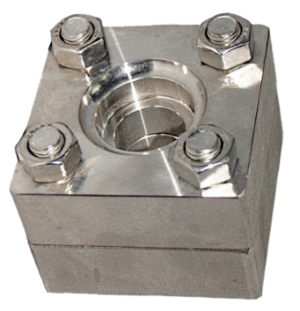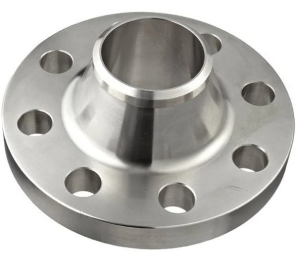Industrial engineering is dynamic. The choice between square flange and round flange connections plays a pivotal role. It ensures structural integrity and reliability. This comprehensive guide aims to dissect the nuances between these two types of flange connections. It addresses the critical question: Which flange connection is the strongest?
Understanding Square Flange Connections
Geometry Matters: The Square Advantage
Square flanges have right angles and sharp corners. This gives them a distinct geometric advantage. The square shape inherently provides more contact points. This promotes a tighter and more secure connection. This feature is crucial in applications where stability is most important. Resistance to torsional forces is also crucial.
Ease of Alignment
Aligning square flange connections is notably straightforward. The right angles facilitate precision during installation, reducing the likelihood of misalignment. The ease of alignment expedites installation. It also makes the connection stronger and more durable.
Applications in Structural Engineering
Square flange connections shine in structural engineering. Load distribution is a critical consideration there. The geometric configuration allows for efficient load transfer. This makes them a preferred choice in applications such as building construction and infrastructure development.
Delving into Round Flange Connections
Circular Symmetry: The Round Flange Advantage
Round flanges, with their circular symmetry, present a different set of advantages. The absence of sharp corners eliminates stress concentration points, distributing loads more evenly. This characteristic enhances the fatigue resistance of the connection. Round flanges are suitable for applications subject to cyclical loading.
360-Degree Sealing Surface
One notable feature of round flanges is the 360-degree sealing surface. This characteristic promotes better sealing capabilities. It makes them a preferred choice in fluid handling systems. The continuous circular seal reduces the risk of leaks and enhances the overall reliability of the connection.
Applications in Piping Systems
Round flange connections find extensive use in piping systems, where the seamless flow of fluids is paramount. The absence of corners in the design reduces turbulence. This minimizes pressure drops and optimizes the efficiency of fluid transport.
Which Flange Connection is the Strongest?
Analyzing Load Distribution
The differences in shape between square and round flange connections affect how they distribute loads. Square flanges have right angles. They distribute loads more evenly. They provide stability in applications where balanced support is crucial. On the other hand, round flanges have circular symmetry. This symmetry allows for efficient load distribution. It is particularly useful in systems where fluid dynamics come into play.
Impact on Piping System Integrity
The choice between square and round flange connections significantly impacts the overall integrity of a piping system. It is essential to understand the load-bearing requirements of the specific application. You also need to understand the structural demands. This will help you make an informed decision that ensures the longevity of the system.
Considerations for Selection
Load Requirements
Evaluate the load requirements of your application. Square flanges excel in scenarios where stability and load distribution are paramount. Round flanges are better suited for applications with cyclical loading.
Installation Preferences
Consider the ease of installation. Square flanges have right angles, offering straightforward alignment. Round flanges provide a continuous sealing surface. This simplifies the installation process in certain applications.
Environmental Factors
Assess the environmental factors impacting your system. Square flanges offer geometric advantages in some structures. Round flanges have sealing capabilities that are useful for fluid-handling environments.
Installation Challenges and Considerations
Square Flange Installation Nuances
Installing square flange connections requires precision due to their angular nature. Maintaining the right angles during installation is crucial. It ensures the system aligns properly and performs well. Attention to detail is key. It helps avoid misalignments that could compromise the connection’s integrity.
Round Flange Installation Challenges
Round flange connections offer a more forgiving installation process. This is due to their circular design. However, aligning the bolt holes precisely is crucial. During installation, attention must be paid to ensure a uniform load distribution. This prevents issues such as leaks or uneven stress.
Sealing Mechanisms: Gaskets and Seals
Square Flange Gasket Systems
Sealing square flange connections often involves specialized gasket systems. These systems are designed to accommodate the right-angled geometry. The choice of gasket material and design plays a critical role in maintaining a secure and leak-free connection over time.
Round Flange Seal Configurations
Round flange connections, with their continuous circular shape, often utilize different seal configurations. The circular shape makes it easier to apply seals. This ensures a reliable barrier against fluid leakage in the system.
Temperature and Pressure Handling
Thermal Performance of Square Flange Connections
Square flange connections, with their stable structure, exhibit good thermal performance. The right angles help control expansion and contraction under temperature changes. This makes them suitable for applications with varying thermal conditions.
Pressure Resistance in Round Flange Configurations
Round flange connections, with their curved design, showcase excellent pressure resistance. The continuous shape allows for a more uniform distribution of pressure. This makes them well-suited for high-pressure applications. The integrity of the connection is crucial.
Customization and Adaptability
Tailoring Square Flange Connections
The right angles of square flange connections offer opportunities for customization. This customization can suit specific applications. Tailoring the dimensions and bolt hole patterns allows for a more precise fit in systems with unique requirements. This showcases the adaptability of square flanges.
Adaptable Nature of Round Flange Configurations
Round flange connections have an adaptable design. They excel in scenarios where flexibility is key. Their continuous shape accommodates variations in system requirements. This provides a more versatile solution for a range of industrial applications.
Cost Considerations and Long-Term Viability
Initial Costs and Square Flange Investments
The initial costs of square flange connections may vary based on the complexity of customization required. However, the investment in precision and stability often pays off in the long run. This is especially true in applications where load distribution is a critical factor.
Round Flange Economies and Long-Term Viability
Round flange connections have a simpler design. They often provide economical solutions. This is especially true in applications where customization is not a primary concern. Their long-term viability lies in their efficiency and adaptability to various fluid systems.
Conclusion
In the realm of flange connections, the choice between square and round is not just a matter of preference. It’s a strategic decision. It directly impacts the performance and longevity of industrial piping systems. Each configuration brings its unique strengths to the table. It caters to diverse applications with precision and adaptability. You can choose square flanges for stability or round ones for efficiency.
The key is understanding the specific demands of the application. Then, choose a connection that shows strength where it’s most important.
Post time: Dec-22-2023



